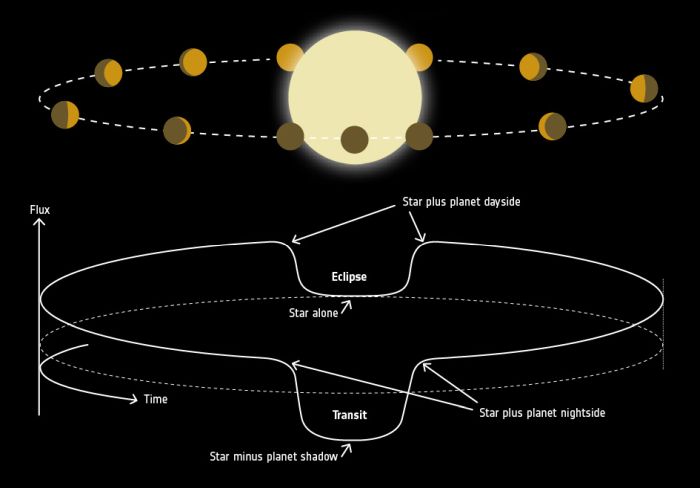What we thought were three confirmed exoplanets have just been knocked off their perch – and a fourth one is under serious doubt.
According to a new analysis using revised characteristics, the objects Kepler-854b, Kepler-840b, and Kepler-699b seem to be too big to be exoplanets after all. That means they must be stars. The fourth object, Kepler-747b, is a borderline case that may take a bit more information to resolve.
The finding puts us just a little bit farther from the milestone of 5,000 confirmed exoplanets, which is within tantalizing reach at time of writing; but it also means we can be more confident in our exoplanet diagnoses going forward.
"Overall, this study makes the current list of planets more complete," says astrophysicist Avi Shporer of MIT's Kavli Institute for Astrophysics and Space Research.
"People rely on this list to study the population of planets as a whole. If you use a sample with a few interlopers, your results may be inaccurate. So, it's important that the list of planets is not contaminated."
The lines between the masses of planets and stars can be a little blurry, with some overlap between them, but there are limits. Below a certain limit, objects become too small to generate the core pressure and temperature to ignite the hydrogen fusion that powers a star. Over a certain limit, an object has to be a star of some sort.
"Most exoplanets are Jupiter-sized or much smaller," explains astronomer Prajwal Niraula of MIT, who led the study. "Twice [the size of] Jupiter is already suspicious. Larger than that cannot be a planet."
The Kepler planet-hunting telescope, which closed its eyes on the stars in October 2018, searched for exoplanets by looking for transits. This is when an exoplanet passes between us and its host star, causing regular faint dips in starlight. This creates a 'transit curve' in the star's light that allows scientists to infer the size of the exoplanet.
As our instruments and techniques have improved, scientists have started using something called a phase curve to study exoplanets. This incorporates light from the star that the exoplanet reflects as it orbits, giving more information about the orbiting body.
 The exoplanet phase curve. (ESA)
The exoplanet phase curve. (ESA)
Initially, Niraula and team were studying phase curves to look for exoplanets that have been stretched into a football shape by the gravitational interaction with the host star. This deformation can give clues as to how massive the objects are, and can be used to determine whether a two-body system consists of a star and an exoplanet, or a star and a smaller star.
Kepler-854b was the first hint that something might be awry.
"Suddenly we had a system where we saw this ellipsoidal signal which was huge, and pretty immediately we knew this could not be from a planet," Shporer says. "Then we thought, something doesn't add up."
The depth of a transit curve signal is related to the size ratio between the exoplanet and the host star. If you know the size of the star – which isn't always easy to figure out, since it has to do with distances, and they're hard to work out in space – you can infer the size of the exoplanet.
A project called Gaia is changing how we understand the Milky Way. Using stellar parallax, Gaia is mapping the precise position and the motion of Milky Way stars in three-dimensional space with the highest accuracy yet. In 2016, when Kepler-854b was discovered, the Gaia data for its host star weren't available.
However, they are now; when Niraula and colleagues revisited the properties of the exoplanet with revised Gaia data, they found the exoplanet was much larger than first thought, around 3 times the size of Jupiter. They also calculated its mass, around 239 times that of Jupiter; the upper limit for a planet mass is around 10 Jupiters.
"There's no way the Universe can make a planet of that size," Shporer said. "It just doesn't exist."
Knowing that tiny stars might be hiding in the database of around 2,000 Kepler exoplanets, the researchers went looking, and found more. Kepler-840b was found to be 2.5 times the size of Jupiter; and Kepler-699b was found to be 2.76 times the size of Jupiter. Kepler-747b was a borderline case, at 1.84 times the size of Jupiter. (Remember, larger than twice the size of Jupiter is suspicious.)
Now that the problem has been identified, it's unlikely there are many more tiny stars out there masquerading as confirmed exoplanets, the team said. With a wealth of Gaia data at our disposal, and an awareness of the problem, we can be more confident that exoplanets are exoplanets.
"This is a tiny correction," Shporer says. "It comes from the better understanding of stars, which is only improving all the time. So, the chances of a star's radius being so incorrect are much smaller. These misclassifications are not going to happen many times more."
The research has been published in The Astronomical Journal.


comment 0 Comments
more_vert